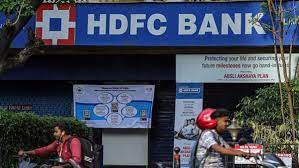Introduction
HDFC, India’s leading financial services provider, has recently received approval from both the Bombay Stock Exchange (BSE) and the National Stock Exchange (NSE) for the transfer of non-convertible debentures (NCDs) worth Rs. 5,000 crore from HDFC Ltd. to HDFC Bank. The approval comes after the Reserve Bank of India (RBI) had given the green light to the transfer earlier this year.
The transfer is expected to bolster HDFC Bank’s capital base and enhance its liquidity, enabling the bank to support its growth plans and expand its lending operations. The move is also expected to benefit HDFC Ltd. as it will free up its capital, allowing it to focus on its core business of mortgage lending.
In this article, we will take a closer look at the HDFC merger, its impact on HDFC Ltd. and HDFC Bank, and what it means for the Indian financial services industry.
Why the HDFC Merger Matters
The HDFC merger is significant as it involves one of India’s most prominent financial institutions, HDFC Ltd., and one of its top-performing banks, HDFC Bank. The transfer of NCDs from HDFC Ltd. to HDFC Bank is expected to have far-reaching implications for both companies, as well as the Indian financial services sector as a whole.
Here are some key reasons why the HDFC merger matters:
- Bolstering HDFC Bank’s capital base: The transfer of NCDs from HDFC Ltd. to HDFC Bank is expected to boost the bank’s capital base and improve its liquidity. This will enable the bank to support its growth plans and expand its lending operations, which is critical for its long-term success.
- Enhancing HDFC Ltd.’s focus on core business: The transfer of NCDs will free up HDFC Ltd.’s capital, allowing it to focus on its core business of mortgage lending. This will enable the company to strengthen its market position and enhance its competitiveness in the Indian mortgage market.
- Strengthening HDFC’s position in the market: The expected to strengthen HDFC’s position in the market as a leading player in the financial services sector. The move is also expected to enhance HDFC’s overall financial health and stability, which will benefit its stakeholders, including shareholders, customers, and employees.
- Driving consolidation in the industry: The HDFC merger is part of a broader trend of consolidation in the Indian financial services industry. As companies look to strengthen their balance sheets and improve their market positions, we can expect to see more mergers, acquisitions, and strategic partnerships in the coming years.
- Boosting investor confidence: The approval of the HDFC merger by the BSE and NSE is a positive sign for investors and stakeholders, indicating that the move has been thoroughly evaluated and is expected to deliver long-term benefits to the companies involved.
HDFC Merger: BSE & NSE Approve Transfer of NCDS from HDFC Ltd. to HDFC Bank
As mentioned earlier, the BSE and NSE have approved the transfer of NCDs worth Rs. 5,000 crore from HDFC Ltd. to HDFC Bank. The transfer is expected to take place soon, subject to regulatory and statutory approvals.
The move is part of HDFC’s efforts to optimize its balance sheet and improve its capital structure. By transferring the NCDs to HDFC Bank, HDFC Ltd. will be able to free up its capital, enabling it to focus on its core business of mortgage lending. At the same time, HDFC Bank will be able to improve its capital base and liquidity, allowing it to expand its lending operations and support its growth plans.
The transfer of NCDs is a win-win for both companies and is expected to have a positive impact on their financial health and stability. The move is also in line with RBI’s efforts to strengthen the Indian banking sector and promote greater collaboration and consolidation among financial institutions.
Conclusion
The approval of the HDFC merger by the BSE and NSE is a significant milestone for both HDFC Ltd. and HDFC Bank, as well as the Indian financial services industry. The transfer of NCDs from HDFC Ltd. to HDFC Bank is expected to have a positive impact on the financial health and stability of both companies, while also promoting greater collaboration and consolidation in the industry.
FAQs
Here are some frequently asked questions about the HDFC merger:
- What is HDFC?
HDFC, or Housing Development Finance Corporation, is India’s leading provider of housing finance and a prominent player in the financial services sector.
- What is HDFC Bank?
HDFC Bank is one of India’s top-performing banks, known for its strong balance sheet, excellent asset quality, and robust risk management practices.
- What are NCDs?
NCDs, or non-convertible debentures, are debt instruments issued by companies to raise funds from the market. They are not convertible into equity shares and typically have a fixed rate of interest.
- Why is the transfer of NCDs significant?
The transfer of NCDs is significant as it will enable HDFC Bank to strengthen its capital base and improve its liquidity, while also freeing up capital for HDFC Ltd. to focus on its core business of mortgage lending.
- How will the HDFC merger impact the Indian financial services industry?
The HDFC merger is expected to have far-reaching implications for the Indian financial services industry, driving consolidation and promoting greater collaboration among financial institutions.
- What are the long-term benefits of the HDFC merger?
The HDFC merger is expected to deliver long-term benefits for both HDFC Ltd. and HDFC Bank, including improved financial health and stability, enhanced market position and competitiveness, and greater ability to support growth and expansion.
READ MORE ABOUT: HDFC Life has reported its Q4 results, with profits remaining stagnant at Rs 359 crore and falling short of expectations.










